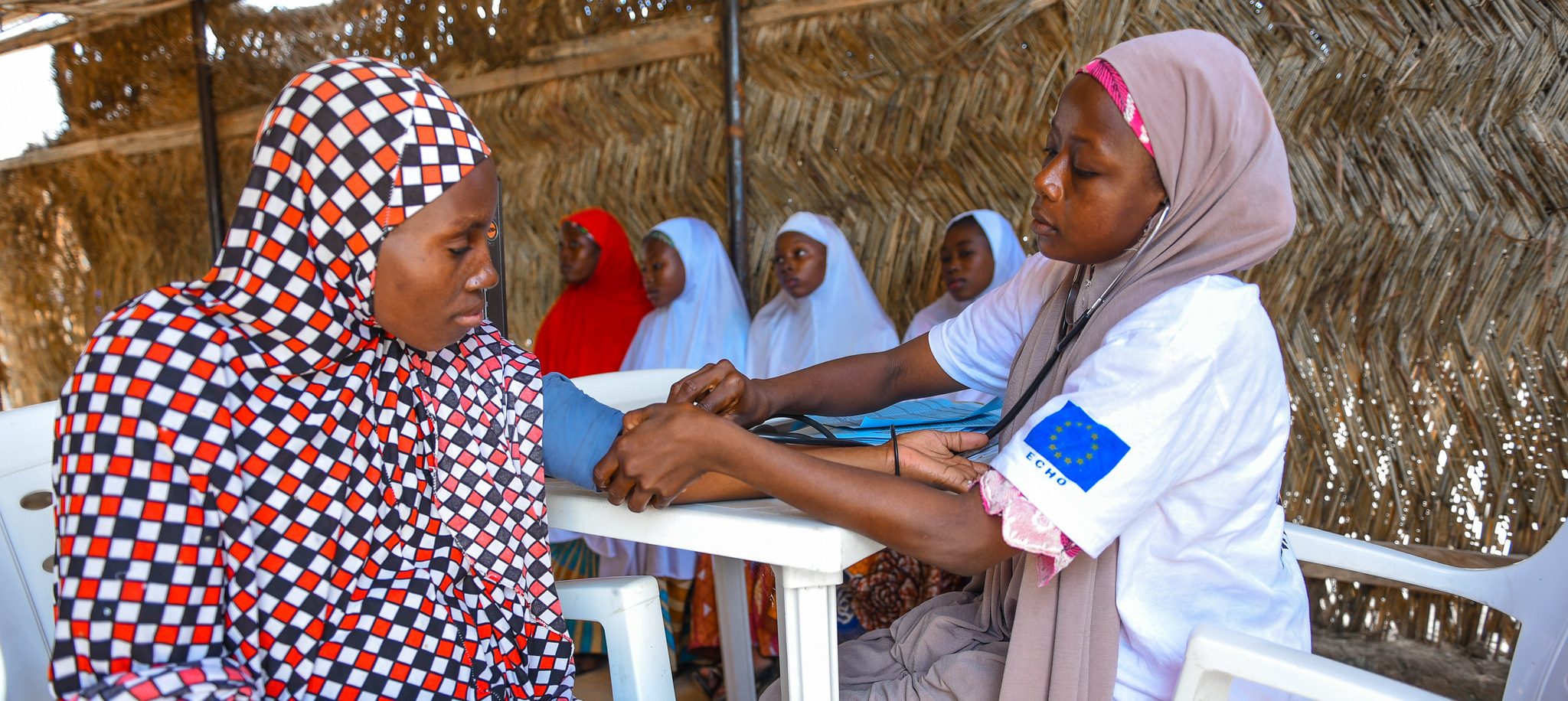
Health care is disrupted during conflict. Mobile outpatient clinics, such as this one in north-east Nigeria, aim to provide essential health care. EU Civil Protection and Humanitarian Aid via Flickr
Resilient health systems: the answer to health threats
4 November 2021
Lynda Keeru of Pamoja Communications reflects on a presentation by Professor Alastair Ager of Queen Margaret University [opens new tab] at the recent THET Annual Conference [opens new tab].
If there was one lesson that has been reiterated during the COVID-19 pandemic it is the need for health systems to be resilient. COVID-19 has demonstrated that health systems, irrespective of resources and size, are vulnerable to crises and shocks. A lot of work needs to be done to better prepare health systems to respond to and recover from these kinds of threats.
Using Yobe state in Nigeria as a case study, Professor Ager took the participants of THET’s 2021 Annual Conference through the components and characteristics of truly resilient health systems with a focus on the model building approach. Yobe is a state in the northeast of the country whose health system has faced severe disruptions as a result of the Boko Haram insurgency. He spoke broadly about the model building approach which provides a mechanism to identify key pathways of threat and adaptation with regard to health service functioning.
Gathering data
In the case of Yobe state, the model building approach involved talking with health workers in the broadest possible sense; not just doctors and nurses, but also clerks, security guards and others key to the health system’s functioning. They described how the situation was before the insurgency, how they responded to the threat, the impact it had on their work and the way they responded as the situation began to resolve a little. Resilience is a process over time and not a one-off event. It is a response to changing circumstances, a time series approach in understanding how things change and how the response to change is crucial to the functioning of the health system.
Professor Agar shared a diagram that showed various ways of working with groups of health workers within a system to understand the challenges that they face and how they respond to them, with a view to begin building a systems map. This is followed by convening people to try and understand all of the factors that shape their experiences. Some of those factors the doctors would know about, others the clinicians or clerk. The challenge is to try and negotiate a shared account of how all of those factors come to bear on how the health system operates.
The process involves some uncomfortable activities, like asking very senior people – who may be reluctant to do such things – to draw a picture of what the situation was like in the early stages of the insurgency. A lot was revealed by this exercise, with many drawings showing churches, crops and motorbikes being burned because Boko Haram was using motorbike assaults to affect communities.
Using the model building approach, researchers are essentially asking, ‘what are the problems that affect the delivery of quality health care in the context of insecurity?’ The model revealed different pathways. Insecurity was leading to the migration of people, which led to high levels of utilization of health services in some places and low use in others. In some facilities it put pressure on the health infrastructure and affected health care quality. Another pathway that it was critical to understand was the loss of healthcare workers. This was due to the departure of many services and programs provided by international agencies, and not only reduced service provision but also the supervision of the staff, which affected the quality of healthcare.
The response to crisis
Political will was mobilized and there was increased liaison with security services so that ambulances could more reliably get to health facilities. This political change also addressed human resource recruitment, with insurance packages which encouraged the migration of health workers into the state. The prior commitment to the free drug supply program meant that what would otherwise have been huge challenges around drug procurement and availability were reduced.
There was significant community involvement which improved liaison with the security services, encouraging communities to evacuate pregnant mothers in labour. Political will was mobilized as a result of mounting pressure from community organizations and civil society about challenges they faced, including the protection of health personnel. There was also a response from health care workers themselves, both in terms of working longer duties and task shifting.
Four characteristics of resilient health systems
Professor Ager suggested that resilient health systems have the following characteristics:
1. Collateral pathways mean there is more than one way of doing something, ie more than one way of getting staff to the clinic, more than one way of delivering products, more than one health worker that can deliver a particular service.
2. Resilient health systems have a narrow focus on a key priority issues to sustain high levels of quality provision.
3. Drug storage and supplies are crucial. It was vital to find ways of moving drugs and appliances when road blocks were lifted, not necessarily to the clinic but to places where they could be safely stored and subsequently accessed when other blockages were cleared.
4. Alignment of motivational interests – in times of crisis there can be a sense of being able to create clarity and unanimity of purpose which at other times had been challenging.
Without health all other priorities, like education, economic empowerment and development, cannot be realized. Investment in health care and resilient health systems is worthwhile as it yields a return on investment both within and beyond the health system itself .
Image: Field Mission in Nigeria. EU Civil Protection and Humanitarian Aid via Flickr [opens new tab]